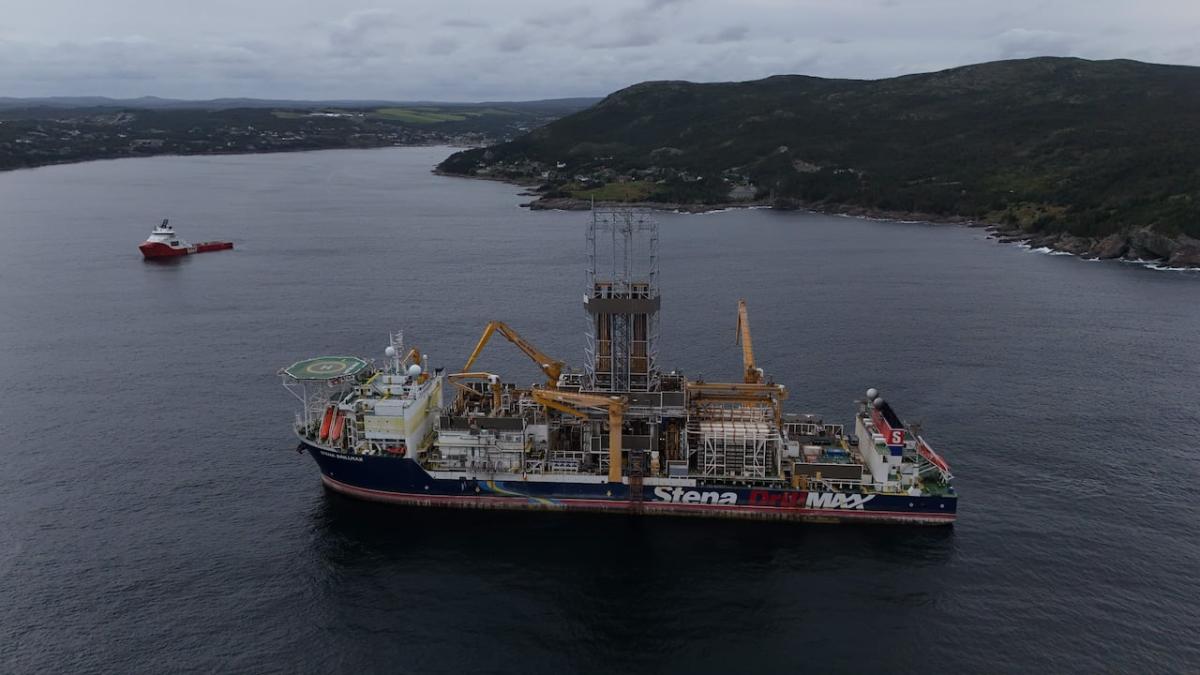


A highly touted exploration well in Newfoundland’s offshore that had garnered international attention did not produce the results that energy giants ExxonMobil Canada and Qatar Energy had hoped.
ExxonMobil spokesperson Shelley Sullivan confirmed in an statement to CBC News that the Persephone C-54 exploration well in the Orphan basin “showed no evidence of commercial hydrocarbons.”
Sullivan said the well — known in the industry as a wildcat because it was drilled outside of an area with proven oil reserves — was drilled safely to the planned depth in roughly 3,000 metres of water by the Stena DrillMAX drillship.
The drillship is anchored this week outside the harbour in Bay Bulls, and was released from its contract by the oil companies on Sept. 8, said Sullivan.
The Persephone prospect is located in the Orphan Basin, some 500 kilometres east of St. John’s, and was being talked about among industry analysts as one of the wells to watch in 2024.
The prospect was discovered by OilCo, Newfoundland and Labrador’s Crown-owned oil and gas company, in 2020 through its geoscience program. Last spring, the online news website Upstream reported that the area where Persephone is located could potentially hold up to three billion barrels of oil.
The president of ExxonMobil Canada, Kerry Moreland, told reporters this past summer that the company was excited about the Persephone well, but she also issued a word of caution.
She said the success rate globally for commercial discoveries with frontier exploration wells like Persephone are one in 10.
CBC News has requested an interview with Moreland for more details, including whether ExxonMobil will abandon efforts to find new discoveries in the Orphan Basin.
ExxonMobil is already a leading player in Newfoundland’s offshore as the operator for both the Hibernia and Hebron oil fields.
Follows similar Equinor-BP announcement
Last week, meanwhile, Equinor and partner BP announced similar results from an exploration well in the Flemish Pass basin called Sitka, which is near the Bay du Nord discoveries.
The semi-submersible drilling rig Hercules safely completed the Sitka well, which Equinor is describing as a “technical discovery,” but not commercially viable.
The Hercules will now drill a second well at a nearby prospect called Cappahayden South, Equinor announced.
Sitka and Cappahayden South are not part of the Bay du Nord business case, said Tore Løseth, the manager for Equinor Canada, but he said the data from these wells “enhances our understanding of the resource potential and helps us optimize the development.”
In mid-2023, Equinor shocked the oil and gas industry when Løseth announced during a conference in St. John’s that a decision on whether to move ahead with the Bay du Nord project would be delayed for up to three years because of escalating development costs.
Equinor and its partners have made five significant discoveries in the Flemish Pass as part of the core Bay du Nord project, and the company is continuing to explore in hopes of improving the project’s economics and build a business that will convince Equinor executives to approve the capital required to develop the field.
“Once the initial Bay du Nord infrastructure is established, future tiebacks will not only extend the field’s life but also maximize benefits for the province,” Løseth said last week in a news release.
Download our free CBC News app to sign up for push alerts for CBC Newfoundland and Labrador. Click here to visit our landing page.